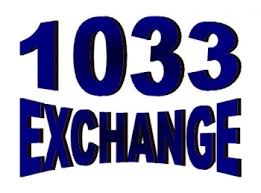If a property will be condemned in the future and the landlord will receive a condemnation award, should they do a 1031 exchange with the proceeds and buy a new property?
 Keep in mind, the 1031 option may be restrictive. With the 1031 exchange, the landowner cannot take possession of the money; instead the money must go directly to a Qualified Intermediary (QI) to qualify for a 1031 exchange. If the condemnation award check is made out to the landowner, a 1031 exchange is no longer an option.
Keep in mind, the 1031 option may be restrictive. With the 1031 exchange, the landowner cannot take possession of the money; instead the money must go directly to a Qualified Intermediary (QI) to qualify for a 1031 exchange. If the condemnation award check is made out to the landowner, a 1031 exchange is no longer an option.
Additionally, once he gets the condemnation award, he has 45 days to identify a property. The landowner is locked into the subject property and then has 135 days to close. In other words, he has only 180 days to identify and close on a property.
 The 1033 exchange, however, may give the landowner more flexibility. With the 1033 exchange option, he has more time (up to 2 or 3 years) to identify a property to purchase AND can take possession of the money. He can find a property to purchase or invest in other options, such as a Delaware Statutory Trust (DST). In addition, the landowner can buy any property with or without the DST using a 1033 exchange.
The 1033 exchange, however, may give the landowner more flexibility. With the 1033 exchange option, he has more time (up to 2 or 3 years) to identify a property to purchase AND can take possession of the money. He can find a property to purchase or invest in other options, such as a Delaware Statutory Trust (DST). In addition, the landowner can buy any property with or without the DST using a 1033 exchange.
The following are reasons we believe the DST works well in both 1031 and 1033 Exchanges:
- The investor moves from active real estate to passive real estate
- There is asset protection potential under DST investments
- Monthly potential income cash flow (potential to net 6%+ after expenses) with AAA-rated investment-grade properties with long-term, triple-net leases with guaranteed rent payments
- No landlord hassles or unexpected cash outlays
- Tenancy-in-common and joint venture structures may be problematic since ownership and management decisions are shared. For example, if you are one of 14 tenancy-in-common real estate investors in a commercial property and only 13 investors want to sell, you cannot sell the property
- DSTs typically liquidate approximately 5 to 10 years after a completed equity raise. Well-funded endowments, and or other qualified purchasers usually purchase them after seasoning and stable rent performance
The Result:
DST investors have the potential to obtain predictable and dependable monthly rental income, a 10-20% increase in equity potential and the ability to move this money into another DST property using a 1031 exchange.
Furthermore, the landowner probably got the idea to do a 1031 exchange from his CPA or a real estate agent who assumes the only way to defer taxes is through a 1031 exchange option.
If a landowner has a condemnation award coming, depending on their particular situation, we may recommend they use the 1033 exchange option. The IRS wrote the 1033 code to support income from condemnation awards.
We believe the DST may be a better option than purchasing an active real estate investment property for the following reasons:
Preserves Their Equity
In IRS Publication 544, the IRS refers to §1033 exchanges as non-taxable. A properly structured exchange provides real estate investors with the opportunity to defer 100% of both federal and state capital gains taxes. Essentially, this is analogous to an interest-free, no-term loan on taxes due until the property is sold. Capital gains taxes may be deferred indefinitely by exchanging one property for the next under §1031.Increases Their Cash Flow Potential
Many investors exchange from a property that produces no income to properties that provide a potential stable income stream. This may, over time, increase the investor's return.
Diversifies Their Holdings
Diversification may help investors increase their safety and rate of return. By not putting all their eggs in one basket, investors can own properties in different geographic regions or properties that provide potential rental income.
Reduces Their Annoyance
Under a net lease, the renter pays the lion's share of expenses generated by exchanged property. Net-leased properties are low maintenance by design. Investment-grade, corporate renters desire properties where they are the single tenant and in charge of their maintenance and insurance. It has proven to be cost savings for their companies by eliminating hidden management fees.
Better Estate & Legacy Planning
Exchanged property may be eligible to receive a stepped-up cost basis on that property upon death. A properly structured exchange helps steward the investor away from unnecessary capital gains taxes leaving a greater legacy for future generations.
Guidelines
IRC §1033 guidelines allow an investor to reinvest proceeds from an involuntary conversion into a like-kind real estate exchange to qualify for full tax-deferred benefits. An exchange is completed most often with a reinvestment of the eminent domain involuntary conversion proceeds into 'like-kind' investment real estate. Personal residences and vacation homes that are not utilized primarily as rentals are not “like-kind' to investment real estate and do not qualify for a §1033 exchange.The §1033 exchange can allow a landowner anywhere from two-to-three years from the date of the forced conversion to close on a replacement, like-kind real estate to complete the exchange. §1033 does not have any identification requirements, which allows the client to select any number or combination of assets to complete a §1033 exchange. An exchange is considered complete when an actual purchase is completed, and the title is passed to the investor. This must be completed before the exchange deadline expires. In addition, a qualified intermediary is not needed in a §1033 transaction. The funds can be held by any entity until the close of escrow. Investment losses of the conversion proceeds before the exchange do not alleviate the taxpayer's requirement to complete a §1033 exchange with a value equal to or greater than the forced conversion. Safekeeping of §1033 funds could make the exchange process run more smoothly. A properly structured exchange may provide the investor the opportunity to retain a portion of his or her conversion proceeds tax-free. The tax code allows leverage in the exchange of §1033 proceeds. Investors should consult with tax professionals, attorneys, and exchange specialists to determine the best course of action.
DST 1031 properties are only available to accredited investors (generally described as having a net worth of over $1 million dollars exclusive of primary residence or $200,000 income individually/$300,000 jointly for the last three years) and accredited entities only. If you are unsure if you are an accredited investor and/or an accredited entity please verify with your CPA and/or Attorney. There are risks associated with investing in real estate and the Delaware Statutory Trust (DST) properties including, but not limited to, loss of the entire investment principal, declining market values, tenant vacancies and illiquidity. Diversification does not guarantee profits or guarantee protection against losses. Potential cash flows/returns/appreciation are not guaranteed and could be lower than anticipated.
The information herein has been prepared for educational purposes only and does not constitute an offer to purchase or sell securitized real estate investments. Because investors situations and objectives vary, this information is not intended to indicate suitability for any particular investor. This material is not to be interpreted as tax or legal advice. Please speak with your own tax and legal advisors for advice/guidance regarding your particular situation.
Securities offered through Concorde Investment Services, LLC (CIS), member FINRA/SIPC. Advisory services offered through Concorde Asset Management, LLC (CAM), an SEC registered investment adviser. Insurance products offered through Concorde Insurance Agency, Inc. (CIA). Fortitude Investment Group is independent of CIS, CAM and CIA.





Let Us Know What You Thought about this Post.
Put your Comment Below.